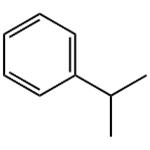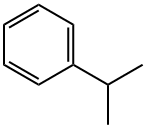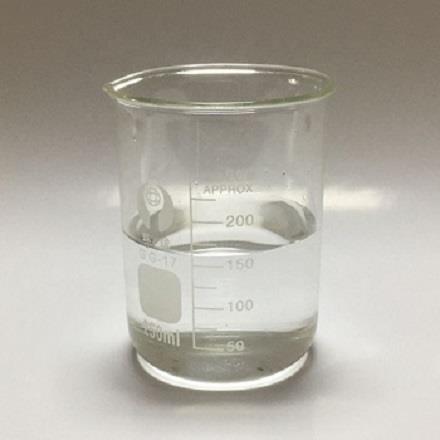Uses and Benefits of CUMENE
Cumene, also known as isopropylbenzene, 2-phenylpropane, or (1-methylethyl) benzene, is a colorless, volatile liquid with a gasoline-like odor. It is a natural component of coal tar and crude oil, and also can be used as a blending component in gasoline.
Uses & Benefits
A building-block chemical, almost all cumene (approximately 98 percent) is consumed as a chemical intermediate in the production of phenol and acetone, two chemicals that are widely used to make plastics.
Additionally, cumene in minor amounts is used as a solvent during the manufacture of paints, lacquers, and enamels. Cumene by itself is not generally sold for consumer use.

Safety Information
Human exposure to cumene primarily occurs at industrial workplaces that produce or use cumene. Occupational exposure concentrations during chemical manufacturing are reported to be low, as production and subsequent reactions of the chemical occur in closed systems.
To enhance employee safety, workers and employers should follow safe handling practices found on the manufacturer’s Safety Data Sheet, which may include wearing protective clothing, respirators, gloves and safety goggles. Moreover, workplaces where cumene is present should be well-ventilated to minimize the potential for worker exposure. A safe workplace airborne concentration for cumene has been established by the American Conference of Governmental Industrial Hygienists (ACGIH®). The U.S. Occupational Safety & Heath Administration (OSHA) has additional information on cumene exposure.
Data from studies conducted with human volunteers indicate that cumene can be absorbed into the body through inhalation, but is rapidly metabolized and excreted, with no evidence of long-term retention in the body.
Answering Questions
How can people be exposed to cumene?
People are mainly exposed to cumene at workplaces that use or produce cumene. Because cumene is volatile and a natural component of crude oil, it is found in emissions from petroleum products, such as vehicle exhaust from some motor fuels combustion, evaporation from gasoline stations and oil spills. People who work with cumene in petroleum-related industries may have higher potential exposure; effects of such exposure can be mitigated by following approved occupational health practices. Also, people can be exposed to low levels through tobacco products, possibly as a combustion product of tobacco.
Does cumene exposure have any health effects?
Human exposure to cumene is only likely to occur in certain occupational settings. Animal studies demonstrate that direct eye contact with liquid cumene may cause slight irritation, but no corneal injury. Cumene vapors may cause mild discomfort and redness in the eyes.
Prolonged or repeated skin contact may cause slight irritation, with local redness, and drying or flaking of the skin. Excessive inhalation of cumene vapors may cause irritation of the nose, throat and upper respiratory tract. If ingested or swallowed in small amounts, cumene has a low order of toxicity, meaning that health effects will likely be minimal or mild. When swallowed in larger amounts, cumene may cause gastrointestinal irritation, and may be aspirated during vomiting.
The National Toxicology Program states that it has not identified any human studies evaluating the relationship between human cancer and exclusive cumene exposure.
);You may like
Related articles And Qustion
See also
Lastest Price from Cumene manufacturers

US $100.00-1.00/KG2024-03-25
- CAS:
- 98-82-8
- Min. Order:
- 1KG
- Purity:
- 99%
- Supply Ability:
- g-kg-tons, free sample is available

US $85.00-850.00/kg2024-01-02
- CAS:
- 98-82-8
- Min. Order:
- 10kg
- Purity:
- 0.99
- Supply Ability:
- 20tons



